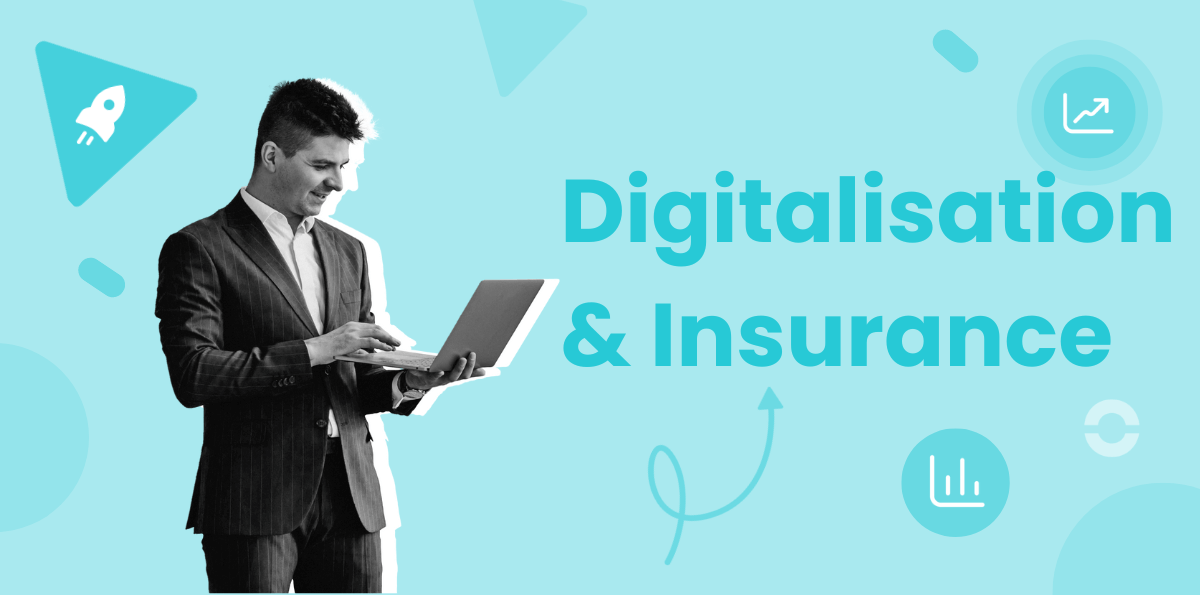Summary
- Digitalization and insurance: what's what
- Technological challenges
- Digital transformation in the insurance industry: challenges for employees
- Business challenges
- Digitization and regulatory challenges
- What does the future hold for distribution?
- The 3 main benefits of digital transformation in insurance
- Take-home points
Digitization is now a non-negotiable for companies in the . While many of them have already started the process, there is still a lot of work to be done to complete the digital transformation. So, we're asking some of the key questions on the matter: What's at stake? How can we speed up this transformation? What measures can be anticipated and put in place?
Try Ringover for Insurance firmsDigitalization and insurance: what's what
Digitization refers to using digital technologies, such as artificial intelligence, big data, connected objects and mobile applications, to improve and automate processes.
This development offers countless advantages to insurance professionals and businesses, allowing them to boost their efficiency, offer innovative new services, and better meet client requirements. Digitization also opens up doors to new business opportunities.
Nevertheless, this transformation also brings up challenges for insurance professionals. We're going to take a closer look at what they are exactly, and how we can overcome them.
Technological challenges
One of the biggest challenges faced by insurers is information security. Insurance companies collect and store vast quantities of sensitive customer data and with the digitization of insurance processes, this data is communicated through multiple systems and networks.
It is therefore crucial that robust cybersecurity measures are implemented to guarantee the integrity of this information. Cybercriminals are a constant threat and data leaks can have catastrophic consequences in terms of reputation and customer trust.
For example, in January 2024, mutual insurance companies and 33 million of their policyholders suffered the consequences when two third-party payment operators, Viamedis and Almerys, fell victim to a data breach.
The other challenge posed for insurance professionals is system interoperability. The aim is to decompartmentalise systems that are often outdated and allowing them to communicate with each other.
This can prove to be complex in some cases, requiring data reformatting and the development of specific APIs.
Digital transformation in the insurance industry: challenges for employees
Insurance industry professionals need to get to grips with new tools and skills in order to take advantage of this digitalization and to master it.
To do this, they need to invest significantly in training their employees in new technologies such as artificial intelligence, big data, and blockchain. Professions are rapidly evolving, and employees need to upgrade their digital skills in order to keep up with the competition on the job market.
Business challenges
New players are emerging in the insurtech sector. Ubiquitous data is a highly effective leverage point, and the shadow of the GAFAMs stocks, for which an incursion is feared in the coming years, is looming over the market. These reasons all provide good indicators for why insurers are transforming their offerings and reinventing their businesses through:
1. Customization
Thanks to the data they collect, insurers can offer customised products that are tailored to each customer's risk profile. The aim here is to move away from a standardization-focused approach towards a more refined, personalised approach.
2. New services
Digitization gives us the ability to offer new value-added services that go far beyond just traditional insurance: automatic accident detection, vehicle geolocation, and self-care, to name but a few. It's a way of building customer loyalty and standing out from the competition.
3. Omnichannel
Customers want to be able to interact with their insurer when they want, where they want and via the channel of their choice. Insurers therefore need to adopt an omnichannel approach, integrating digital channels into their existing distribution system. The aim is to deliver a seamless, consistent customer experience, whatever the channel used.
4. New approaches to customer relations
With the multiplication of communication channels, insurers may be faced with finding Insurers need to rethink their approach to customer relations, with more frequent, personalised, and digital interactions. Plus, on top of this, they need to simplify contracts and underwriting/claims processes to improve customer satisfaction.
Digitization and regulatory challenges
Digitization is forcing companies in the insurance sector to take specific measures to protect customers' personal data. They must comply with current regulations, such as the RGPD. It is therefore crucial to find out how the tools and software chosen as part of digitization meet these standards.
The other challenge facing companies in the sector is to ensure that the artificial intelligence algorithms used to automate certain tasks are transparent, fair and free from discriminatory bias.
What does the future hold for distribution?
Digitalization may lead to the replacement of certain intermediaries by online platforms. However, human contact remains paramount in this trust-based sector.
Faced with a challenging context, with issues such as climate change, the geopolitical context, constantly evolving regulations, and digital transformation, professionals in the insurance industry more than ever need to reinforce their expertise and reinvent their distribution networks by:
- Expanding on their knowledge of claims
- Better matching the customer's digital journey with their profile (habits, assets, health, etc.).
- Closely monitoring changes to legislation.
The 3 main benefits of digital transformation in insurance
Despite all these challenges, which require getting one's hands dirty, digitalization holds the key to multiple benefits for insurers:
1. Timesaving
One of the main benefits of digital transformation in insurance is the considerable time saved. Time-consuming and repetitive manual tasks can be automated, enabling employees to concentrate on higher value-added activities.
This applies, for example, to manual data entry, document verification and distribution, reducing the risk of errors and delays.
2. Cost-reducing
Document dematerialization reduces the costs associated with printing, storing and physically distributing documents.
Cost savings can also be seen in communications. By using a cloud-hosted communications solution that integrates with your distribution system, you can eliminate a number of expenses:
- Telephone system maintenance (since this is provided by the service provider)
- Installation and configuration costs (no additional hardware required)
- International call charges (with Ringover, for example, unlimited calls to over 100 destinations are included in all packages).
3. Improved customer experience
Digitization makes a major contribution to this, insofar as it empowers customers. It enables them to access all their services online, including:
- Submitting a request
- Checking statuses
- Referring to FAQs
- Getting a receipt or document, etc.
Overall, the experience is more convenient, faster and has the added advantage of relieving congestion on telephone lines for the insurance company's contact centre.
What's more, with the emergence of new AI tools, companies in the sector can process large quantities of data more quickly and personalise their members' experience even more. The other advantage of AI in insurance is that it can also speed up processes such as claims verification and compensation.
Take-home points
Ultimately, given the colossal challenges that they face, companies in the insurance sector need to focus on generating value and transforming the customer experience through new services and offerings.
To achieve this, companies need to invest and equip themselves with new tools that fully comply with current legislation. It also means training employees in using these tools and implementing new working methods.
Ringover can support you through this digitalization with its cloud-based telephony solution, which seamlessly integrates into your existing software.
You can try it now for free or request a personalised demo with our experts to give you an idea of how the solution can meet your business' specific needs.
Published on May 13, 2024.


